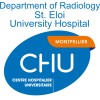
Prenatal Drug Exposure: Effects on the Adolescent Brain and Behavior Development
Drug AbusePrenatal Drug ExposureBackground: - Recent research has suggested that prenatal exposure to drugs may affect specific brain processes, including working memory, stress response, and decision making. However, most of the research on the effects of prenatal drug exposure in humans has been conducted early in life, and very little is known about effects of prenatal drug exposure during the crucial brain development period that takes place during puberty and adolescence. The biological and psychological changes associated with puberty may increase adolescents' sensitivity to prenatal substance exposure. Researchers are interested in using functional magnetic resonance imaging (fMRI) scans to study brain function and learn more about the effects of prenatal drug exposure on adolescents. Objectives: - To examine the effects of prenatal substance exposure on working memory, decision making, and normal brain activity in adolescents. Eligibility: - Adolescents between 12 and 17 years of age who are enrolled in a larger follow-up study of children exposed to drugs in utero. Design: The study will involve a single outpatient session with two fMRI scans that will test working memory and decision-making processes. Participants will have brief medical history, a physical examination, and a urine test for drugs of abuse. Participants will then be trained on the working memory and decision-making tasks before having an initial MRI scan to provide a baseline reading. The fMRI scans will take 40 to 45 minutes each, and participants will have break in between as needed.

Treatment of Hepatitis C in Psychiatric Patients
Mental DisordersDrug AddictionPsychiatric disorders or drug addiction are often regarded as contraindications against the use of Interferon-alpha in patients with chronic hepatitis C. The investigators aim is/was to get prospective data about adherence, efficacy and mental side effects of IFN-alpha treatment in different psychiatric risk groups compared to controls. In a prospective trial, 81 patients with chronic hepatitis C (positive HCV-RNA and elevated ALT) and psychiatric disorders (n=16), methadone substitution (n=21), former drug addiction (n=21) or controls without psychiatric history or addiction (n=23) should be/were treated with a combination of IFN-alpha-2a 3 x 3 Mio U/week and ribavirin (1000-1200 mg/day).

Medical Office Intervention for Adolescent Drug Use - Attention Study Supplement
Substance-related DisordersThis study will use the CCPT II to assess attention in 12-21 year olds enrolled in a randomized controlled trial of a brief behavioral treatment for substance abuse. This study will describe at baseline levels of attention using a well validated instrument (Connors Continuous Performance Test II) and explore the association between attention levels and substance use. The primary study hypothesis is that lower initial levels of substance use (as measured by percent days abstinent) will be associated with higher attention levels. We envision that this data will inform a better understanding of how attention may modify treatment response.

Observational Study of Misuse of High Dose Buprenorphine (Subutex® or Generic) in Opiate-Addicted...
BuprenorphineNaloxone3 moreThe purpose of this study is to assess the risks of abuse, misuse and adverse events related to high dose buprenorphine. Approximately 1250 patients taking Subutex (Schering-Plough) or its Buprenorphine High Dose (BHD) generic (Arrow Laboratories) will participate in this study. Data will be collected using physician questionnaires and self evaluation patient questionnaires at the first visit and visits at 6 and 12 months.

Validating Adolescent SBIRT Measures
Substance AbuseThe purpose of this study is to address the needs for efficient and informative measurement for evaluating adolescent Screening, Brief Intervention, and Referral to Treatment (SBIRT) strategies. The investigators will undertake a longitudinal cohort study to build and validate a substance specific measurement battery that includes patient-centered and intermediary outcomes which can be integrated into a range of healthcare and research settings. The results of this project will enable evaluation of SBIRT trials and clinical efforts by validating a parsimonious set of measurement tools that can be incorporated into electronic health records. The primary goal of the proposed project is to develop a set of brief, valid tools that will allow both researchers and clinicians to collect information that enables evaluating and refining brief interventions. The main objective is to define and disseminate a set of brief and easy to administer measures that accurately detect 1) substance use frequency, 2) substance-specific patient centered outcomes and 3) intermediate measures of impact of adolescent SBIRT. The specific aim addressed in this project is to develop and administer an assessment battery that includes novel questions assessing substance use to be validated against criterion standard measures both cross-sectionally and longitudinally.

Integrated Prevention and Collaborative Care for Youth Mental Health
Mental DisordersSubstance-Related Disorders1 moreMental health problems affect 10-20% of children and adolescents worldwide, with half of affected youth experiencing problems by the age of 14. Despite the early onset of mental health problems, evidence-based prevention and early intervention programs remain scarce. If left untreated, early-onset mental health problems can progress to become severe or chronic conditions, and incur significant medical and societal costs. The current project proposes an integrated screening and intervention model that was developed involving active youth, family and community engagement. This project, known as Inter-Venture, focuses on reducing barriers to youth mental health care and promoting early screening and intervention by fostering collaboration between school and community-based services providers. The Inter-Venture project is being conducted in the Montreal area (Canada), and consists of three intervention modalities. Namely, 1) systematic school-based screening and personality-targeted interventions for students most at risk of mental health problems and substance misuse (the Preventure program); 2) a parent program designed to strengthen parenting skills and to improve the management of child behavior problems (Cope/EQUIPE program); 3) integrated services provided by a multidisciplinary team of professionals (referred to as Inter-Action) for youth with significant symptoms of mental health problems, substance misuse and/or psychosocial difficulties. The intervention model involves knowledge transfer to boost capacity-building and improve the provision and sustainability of evidence-based interventions in community settings. The primary goal of the Inter-Venture trial is to assess the potential effect of the school-based targeted interventions and collaborative care in the prevention, early detection and reduction of mental health problems, substance misuse and psychosocial difficulties among young people. The secondary goal is to assess the effect of interventions on school performance and whether the interventions can protect cognitive functions that may be negatively affected by early-onset substance use and mental health problems, and promote cognitive development through the prevention of these difficulties.

Working With HIV Clinics to Adopt Addiction Treatments Using Implementation Facilitation
Substance-related DisordersTobacco, alcohol and opioid use disorders threaten the health of HIV-infected patients. What if evidence-based counseling and medication treatments for tobacco, alcohol and opioid use disorders (herein refered to as addiction treatments) were routinely provided in HIV clinics? Implementation Facilitation is an established strategy to increase the uptake of evidence-based treatments. Our goal is to evaluate the impact of Implementation Facilitation on the use of addiction treatments in four large HIV clinics. The purpose of the WHAT-IF study is: Aim 1. Among key stakeholders, to use quantitative and qualitative (mixed) methods to identify the site-specific evidence, context and facilitation-related barriers and facilitators to the integration of addiction treatments to help tailor an Implementation Facilitation for each clinic. Aim 2. To evaluate the impact of Implementation Facilitation on: 2a: Organizational readiness to deliver addiction treatments 2b: Provider readiness to deliver addiction treatments 2c: Provision of addiction treatments 2d: Changes in organizational models of care used to deliver addiction treatments Aim 3. To evaluate the impact of Implementation Facilitation on antiretroviral therapy receipt, HIV viral suppression, VACS Index, and retention in HIV care among patients eligible for addiction treatment.

Obstetric Pain Management for Women With Opioid Use Disorder (QUEST)
Opioid-use DisorderThis is a mixed methods longitudinal observational study to assess patient and provider perspectives on pain and pain management among pregnant women with opiate use disorder (OUD). The findings from this study will inform patient-centered approaches to pain management. Themes surrounding mothers' pain/recovery experiences that correlate with quantified pain and analgesia endpoints will be identified. Findings will also shape an appropriate patient-centered research agenda for obstetric pain management in patients with OUD.

EffectS of CAnnabidiol in Patients: Evaluation
Substance-Related DisordersSince its recent marketizing in France, the cannabidiol (CBD), a major component of cannabis, is used in many over-the-counter products in France. Some painful patients or patients suffering from addiction seem to use the CBD in search of therapeutic effects. Yet, there are no data available for patients in algology and addictology, particularly with regard to the prevalence of the use of CBD, the effects sought and felt. Faced with the emergence of the use of a substance with a therapeutic purpose but outside a medical framework and without monitoring of adverse effects, it becomes essential to characterize the use of CBD. The main objective of the study is therefore to assess the prevalence of CBD users in algology and addictology departments. Secondary objectives are to characterize the use of CBD as well as the users of CBD, and to evaluate the impact of the use of CBD on other psychoactive substances use or current drug treatments and the drug liking of CBD.

Medical Students and Psychoactive Substances Use
Psychoactive Substances ConsumptionMedical students are heavy users of psychoactive substances, and even if levels of use vary depending on the universities, the average levels are higher than most other students. In France, however, the use of licit or illicit substance has not been precisely described in medical students. The aim of this study was therefore to define the different modes of consumption of medical students. Methods: This study was a cross-sectional survey in medical students from the University of Montpellier, and the investigators performed a cluster analysis of data. Both medical students and residents were included. Socio-demographic, medico-psychological and addictological data were collected.
